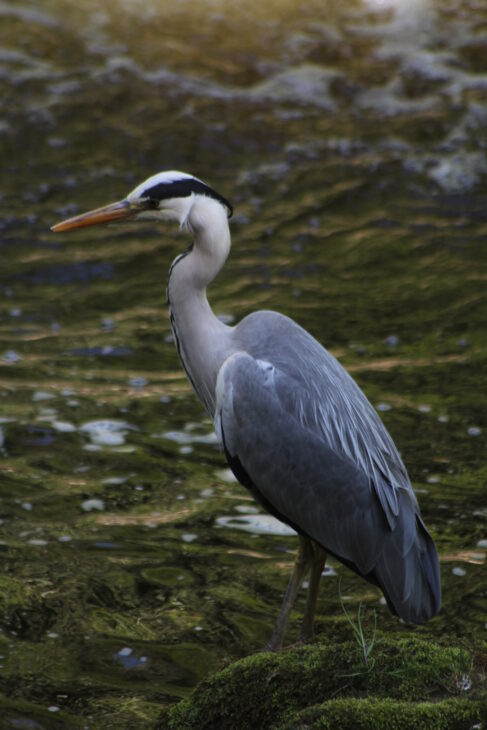No more elephants!
,

The elephant in the room’ is a hugely overused phrase these days, don’t you think? So I’ve come up with a new one: ‘the heron in the loch’.
I was strolling back along Broadwood Loch when I saw the tall, ashy-grey shape of a heron a few yards away. I saw it – but I hadn’t registered it – it had become a part of the landscape, until I thought about it later. Herons are massive birds – this one surely stood at least three foot tall. It posed like a living statue, black crest flicking in the breeze like a salmon fly, bright yellow eyes unblinking, dagger-beak braced to run through its prey. How could I have failed to appreciate it?
Of course it was the old story of familiarity breeding contempt. I’m so used to seeing a heron feeding there that I don’t always notice it nowadays. Forty years ago it could have been a different story. A heron might have been a rare sight. For centuries anglers resented the fact that herons made fishing look easy, and persecuted them as a result. Now they’re protected by law, and in the UK their numbers have increased by a third since 1980.
They don’t only take fish, mind you. They’re partial to frogs, ducklings, voles and even worms too. I often see them on the grass in the winter stabbing the soil for a fat earthworm. They lift off with a frustrated ‘kraak’ as I approach, circling away to lunch elsewhere in private. I recently found out that they produce pellets, just like owls and other birds of prey. I’d love to find one, though I wouldn’t know where to start looking. They can travel up to 20km to feed, which makes for a wide search area!
The scientific name for all herons is Ardea. The name apparently comes from the town of Ardea, which was the capital of an ancient Italian tribe called the Rutuli. The town was razed to the ground in a war, but from its ashes rose a lean, pale bird, shaking the cinders from its wings. Cinerea, ‘ash-grey’, is the grey heron’s specific name, and I like to think it was actually a grey heron that rose, phoenix-like. And if I can keep that image in my mind there’s no way this splendid bird will ever be my elephant in the room again.
